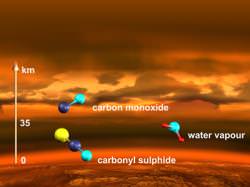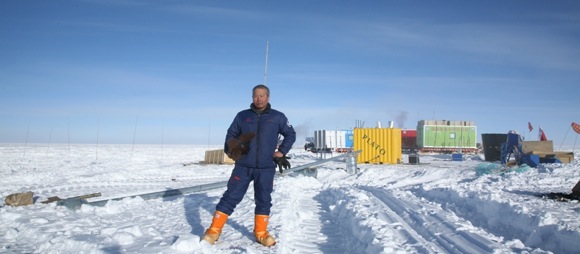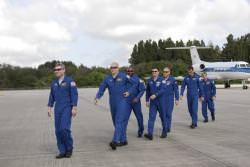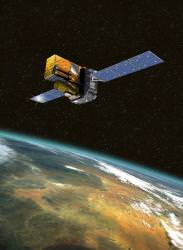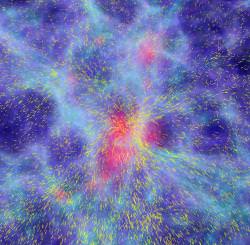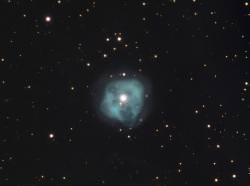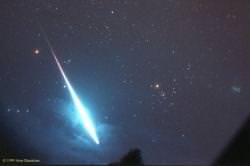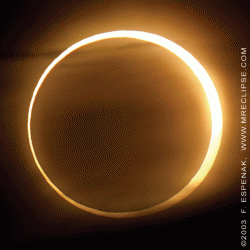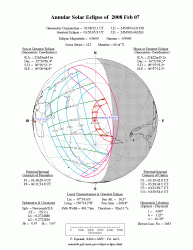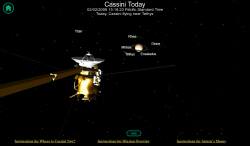High energy collisions by the nearly-completed Large Hadron Collider (LHC) may be able to generate particles that are sensitive to dimensions beyond our four dimensional space-time. These exotic particles, called Kaluza-Klein gravitons, would be highly sensitive to the geometry of extra-dimensions, giving scientists an idea about what lies beyond our universe. If these particles are detected, and if their characteristics can be measured, then perhaps the extra dimensions predicted by string theory may be proven to exist…
How can you measure the size of a room without actually measuring it? Forget measuring the room, you can’t even see it! The room is invisible; it is outside your observational ability. But what if you could bounce sound off the walls? Even better, what if the walls of the invisible room were made up of resonant particles, producing their own sound? If the sound from these resonant particles could then be analyzed, the shape of the invisible room would be known.
According to string theory, there are many “invisible rooms” that we, as observers, cannot experience. We are confined to our three dimensions of space and one dimension of time (although this may not always be the case), otherwise known as four dimensional space-time. Elemental vibrating strings thread through our universe and predict that there may be six or seven extra dimensions coexisting. Although we cannot directly experience the dimensions beyond the normal four, can we measure the characteristics of string vibrations travelling from these extra dimensions into our observable universe?
In new research published by Gary Shiu, Bret Underwood, Kathryn Zurek at UW-Madison and Devin Walker at UC-Berkeley, quantum particles have been theorized to have the ability to resonate with dimensions beyond our universe; beyond the 4th dimension, considered to be time. From this resonance, signatures from extra-dimensions could pass through our four dimensional space-time to be measured. From this analysis, the “shape” of the extra dimensions may then be understood. This is not purely out of curiosity, according to string theory the shape of extra dimensions influences everything in our universe:
“The shape of the dimensions is crucial because, in string theory, the way the string vibrates determines the pattern of particle masses and the forces that we feel.” – UW-Madison physics professor, Gary Shiu.
The team predict particles carrying extra-dimensional signatures could be generated by the Large Hadron Collider at CERN (nr. Geneva, Switzerland). At very high energies, Kaluza-Klein (KK) gravitons may be created for a brief moment, carrying the signatures with them. Unfortunately KK gravitons will decay very quickly, but from this decay a shower of lower energy, detectable particles will be created. By analyzing the resulting shower, a fingerprint of the KK particle’s signature may be constructed. Any slight changes in the geometry of the detected particles may indicate a particular dimension, and many signatures may be mixed, so complex computer simulations are required to understand the results coming from the LHC.
Source: Science Daily


